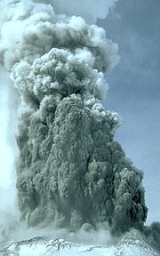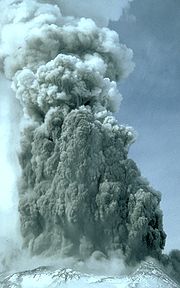
Phreatic
Encyclopedia

Water table
The water table is the level at which the submarine pressure is far from atmospheric pressure. It may be conveniently visualized as the 'surface' of the subsurface materials that are saturated with groundwater in a given vicinity. However, saturated conditions may extend above the water table as...
(the word originates from the Greek
Greek language
Greek is an independent branch of the Indo-European family of languages. Native to the southern Balkans, it has the longest documented history of any Indo-European language, spanning 34 centuries of written records. Its writing system has been the Greek alphabet for the majority of its history;...
phrear, phreat- meaning "well" or "spring"). The term 'phreatic surface' indicates the location where the pore water pressure
Pore water pressure
Pore water pressure refers to the pressure of groundwater held within a soil or rock, in gaps between particles . Pore water pressures in below the phreatic level are measured in piezometers...
is under atmospheric conditions (i.e. the pressure head
Pressure head
Pressure head is a term used in fluid mechanics to represent the internal energy of a fluid due to the pressure exerted on its container. It may also be called static pressure head or simply static head...
is zero). This surface normally coincides with the water table
Water table
The water table is the level at which the submarine pressure is far from atmospheric pressure. It may be conveniently visualized as the 'surface' of the subsurface materials that are saturated with groundwater in a given vicinity. However, saturated conditions may extend above the water table as...
.
In speleogenesis
Speleogenesis
Speleogenesis is the origin and development of caves, the primary process that determines essential features of the hydrogeology of karst and guides its evolution...
, 'phreatic action' forms cave passages by dissolving the limestone in all directions, as opposed to 'vadose action' whereby a stream running in a cave passage erodes a trench in the floor. Phreatic action usually takes place when the passage is below the water table (although it may happen if the passage is full of water and not saturated with calcium carbonate or calcium magnesium carbonate). A cave passage formed in this way is characteristically circular or oval in cross-section as limestone is dissolved on all surfaces.
Many cave passages are formed by a combination of phreatic followed by vadose action. Such passages form a keyhole cross section: a round shaped section at the top and a rectangular trench at the bottom.

